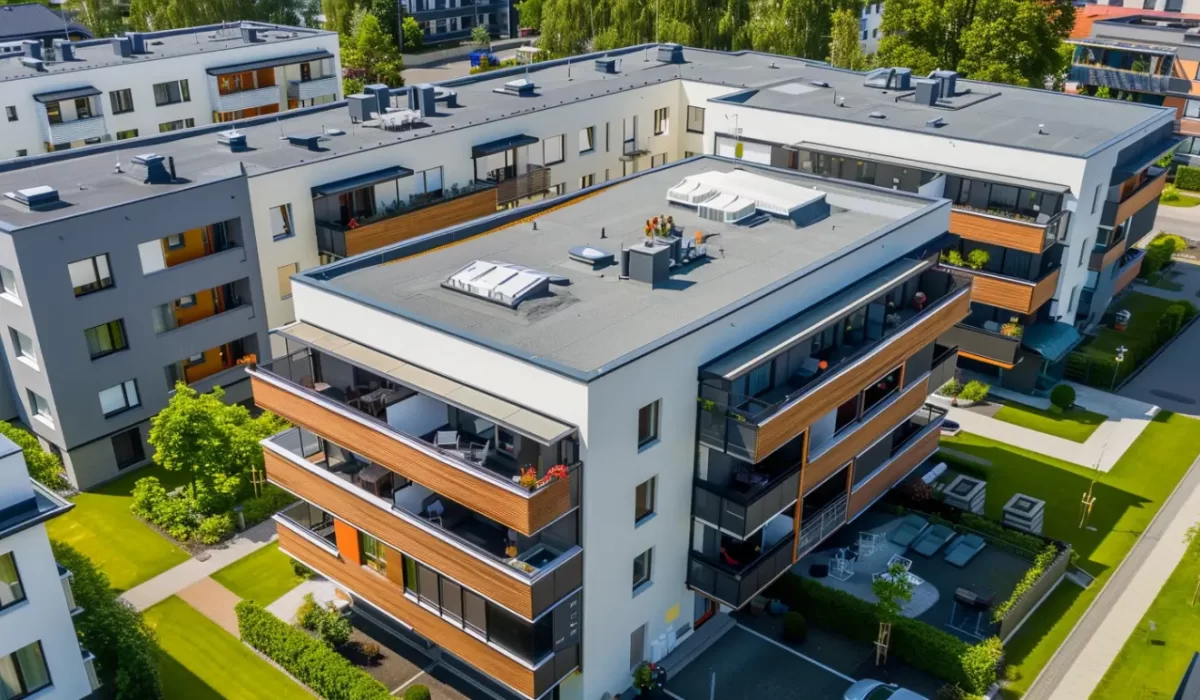Understanding roofing damage in multi-structure complexes is essential for property owners and facility managers alike. Fontaine Roofing in Anaheim, CA, emphasizes the importance of regular inspections that incorporate modern technologies, such as drone inspections and thermal imaging, to preemptively identify potential issues before they escalate into costly repairs. With interconnected roofs, the complexities of maintaining structural integrity demand a keen eye for both visible signs and underlying problems. Ensuring that the roof’s condition remains optimal not only safeguards the property but also maximizes the roof’s lifespan, providing peace of mind to all stakeholders involved.
Understanding Roofing Damage in Multi-Structure Complexes
Addressing roofing damage in multi-structure complexes is vital for maintaining integrity and avoiding costly repairs. Factors like building age and material selection can increase vulnerability in interconnected roofs. Regular inspections are essential to catch small cracks and potential issues before they lead to expensive water damage or mold growth. Environmental conditions also significantly impact roof surfaces, particularly in commercial properties, affecting the roofing system’s longevity and performance.
Contact Us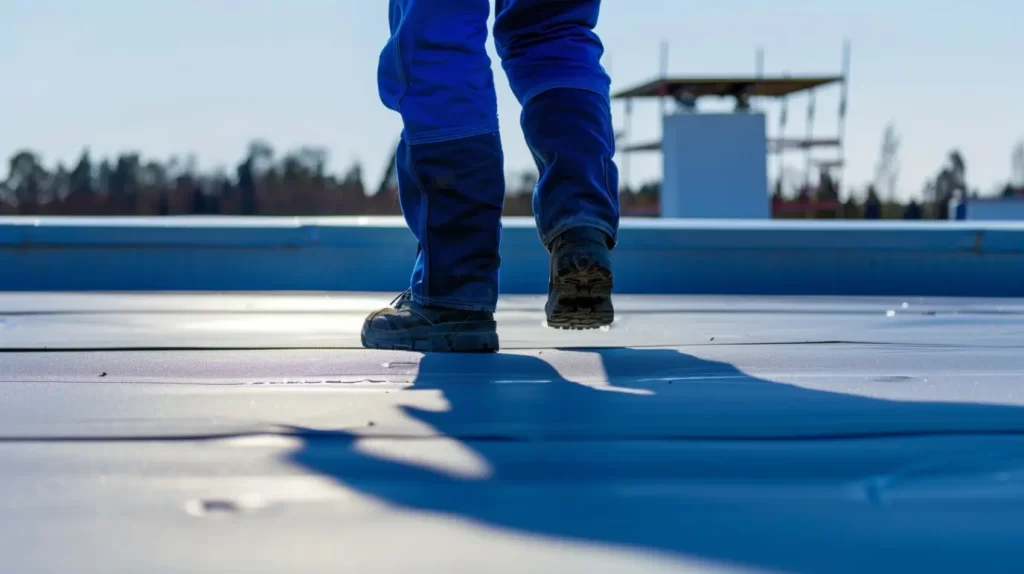
Why Multi-Building Properties Are More Vulnerable
Multi-building properties face unique vulnerabilities due to their expansive roof structures and the interconnected nature of their designs. These configurations often lead to compounded stress on roofing systems, making them more susceptible to structural issues like water infiltration and hidden damage. Furthermore, the presence of HVAC units, solar panels, and distinct roofing materials can create additional complexity. Regular inspections are crucial to detect early signs of wear and mitigate risks. Property owners and facility managers must prioritize proactive assessments to ensure the longevity and integrity of their roofs.
Types of Roofs Commonly Used in Large Property Complexes
Large property complexes commonly use various roofing types based on performance and durability. Flat roofing systems are favored for cost-effectiveness and maintenance ease, while sloped roofs, like metal, enhance snow and water runoff. Specialized materials such as TPO and EPDM offer energy efficiency and moisture resistance. The roofing choice affects structural integrity and maintenance strategies. Understanding these options helps property managers make informed decisions that ensure longevity and reduce repair costs.
Potential Impact of Roofing Damage on Residents and Operations
Roofing damage in multi-structure complexes can significantly disrupt both resident comfort and operational efficiency. Compromised roofs may lead to water infiltration, resulting in interior damage and potential mold growth, ultimately impacting the health and safety of occupants. Additionally, unresolved structural issues, including potential structural damage, can escalate repair costs and necessitate extensive roof work, straining the budgets of property owners and managers alike. Proactive inspections and timely repairs ensure structural integrity, providing peace of mind and safeguarding against costly disruptions to community living and operations.
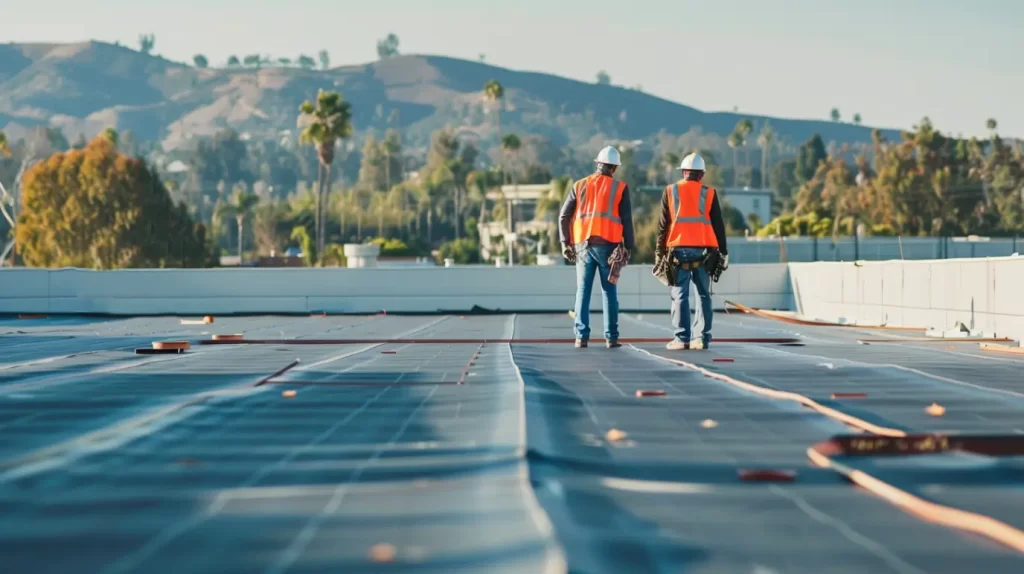
Key Signs of Roofing Damage to Watch For
Identifying roofing damage requires vigilance, especially in multi-structure complexes. Watch for exterior visual indicators such as missing shingles, granule loss, and signs of wear on roof surfaces. Additionally, small cracks can indicate underlying structural weaknesses. Inside, hidden moisture damage manifests as stains or mold growth, signaling possible water infiltration. Any signs of water damage around HVAC units should also be closely monitored, as they could point to larger issues affecting structural integrity. Timely detection ensures necessary repairs, mitigating costly repairs and maintaining the building’s condition.
Exterior Visual Indicators of Early Damage
Several exterior indicators can signal early roofing damage in multi-structure complexes. Small cracks on the roof surface may seem minor but can lead to water infiltration and structural issues. Inspecting for granule loss on shingles is essential, as it signifies wear that compromises the roof’s lifespan. Sagging or uneven roof lines also indicate potential structural problems. Regular assessments by property managers using drone inspections enhance detection efforts, ensuring early signs of damage are promptly addressed to safeguard residents’ peace of mind.
Hidden Interior Clues in Multi-Unit Buildings
Indicators of hidden damage within multi-unit buildings can manifest silently, often overlooked. Signs of water infiltration, such as stained ceilings or peeling paint, suggest potential roof leaks, while musty odors might indicate mold growth hidden behind walls or in HVAC units. Additionally, interior cracks in walls or ceilings can be an early warning of structural issues related to the roof’s condition. Regular inspection for these clues is essential, providing property managers and owners with peace of mind and ensuring the structural integrity of interconnected buildings is maintained.
Structural Complications Unique to Interconnected Roofs
Structural weaknesses in interconnected roofs can lead to significant complications, particularly in multi-structure complexes. The design often creates shared load-bearing elements, making it crucial to assess not only individual units but also how they interact. Small cracks or signs of wear may propagate through these connections, exacerbating underlying structural issues. Water infiltration from a damaged section can also influence adjacent roofs, leading to moisture damage and potentially costly repairs. Engaging professional inspections helps property managers identify and address these complexities early, ensuring the structural integrity of the entire complex.
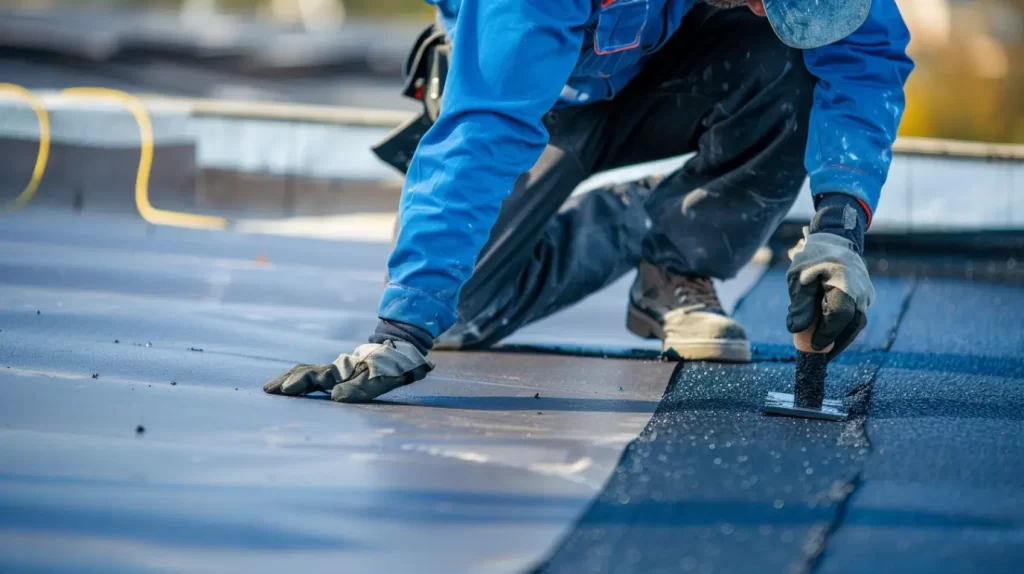
Organizing an Effective Roofing Inspection Across Multiple Structures
Effective roofing inspections require careful planning and coordination. Facility managers should prioritize access routes and safety protocols while ensuring all team members have the necessary gear. Considering roof size and assigning roles streamlines assessments. Partnering with contractors like GAF Master Elite, CertainTeed Shingle Master, and Polyglass Preferred Contractor ensures expertise. Our credentials as an IB Roofing Systems Authorized Applicator and TRI certified highlight our commitment to excellence. Strategic scheduling enhances efficiency and minimizes disruption for residents, helping property owners proactively address issues. Memberships in CACM, CAI, and NRCA reflect our dedication to industry standards.
Coordinating Access and Safety Protocols
Ensuring safe access to multi-structure complexes during roof inspections is vital for efficiency. Property and facility managers should create a clear plan that includes safety equipment and protocols to mitigate risks. Coordinating with residents is essential, keeping them informed of inspection schedules and safety measures. This proactive communication builds trust, reduces disruptions, and protects against injuries and liability. Proper planning not only safeguards structural integrity but also enhances overall efficiency.
Assigning Inspection Roles and Responsibilities
Determining specific roles and responsibilities is essential for an effective roofing inspection across multiple structures. Property managers should collaborate with roofing contractors to assign qualified personnel for each segment of the property, ensuring safety equipment and protocols are adhered to. Inspectors must be trained to identify signs of wear, such as small cracks or moisture damage, which can lead to costly repairs. Clear communication among team members fosters thorough assessment, allowing for precise measurements that boost the roof’s lifespan, structural integrity, and support better budget planning while minimizing disruption to residents.
Scheduling Inspections for Minimal Disruption
Effective scheduling is crucial for minimizing disruptions during roofing inspections in multi-structure complexes. Coordination among property managers, residents, and contractors ensures inspections occur at times that least impact daily operations. Planning during off-peak hours or weekends allows efficient access while maintaining safety protocols. Clear communication about the inspection process and timelines fosters resident peace of mind. By prioritizing thoughtful scheduling, property managers can address repairs effectively without excessive costs or inconveniencing occupants.
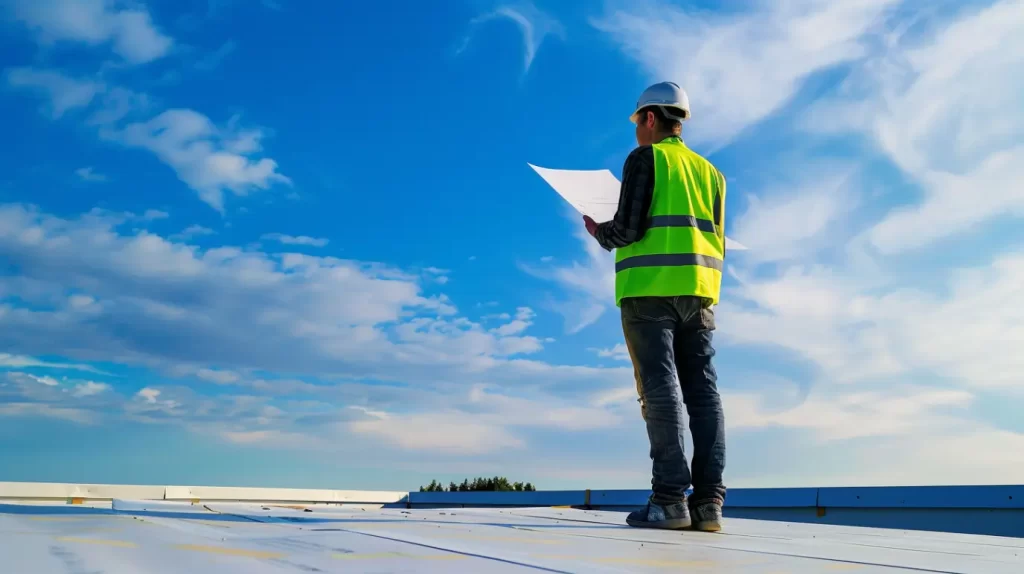
Advanced Methods for Detecting Roofing Damage
Modern technology greatly improves the detection of roofing damage in multi-structure complexes. Drone inspections provide aerial views for detailed assessments of your roof’s condition without risking personnel safety. Thermal imaging reveals hidden issues by identifying temperature differentials indicating moisture infiltration or structural problems. Satellite imagery efficiently covers large areas, pinpointing potential storm damage. These advanced methods ensure thorough examinations and give property owners peace of mind, enabling timely interventions before minor issues become costly repairs.
Drone Inspections and Aerial Surveillance Technologies
Advancements in drone technology provide effective tools for assessing roofing conditions in multi-structure complexes. Aerial surveillance offers high-resolution imagery that identifies issues like granule loss and surface cracks without traditional scaffolding, reducing safety risks. This innovative method allows for comprehensive roof evaluations, ensuring minor problems are detected before escalating into costly repairs. Drones enhance inspection precision and streamline decision-making for necessary repairs, giving facility managers peace of mind.
Utilizing Remote Sensing and Satellite Imagery
Incorporating remote sensing and satellite imagery into roofing inspections offers significant advantages for property owners and facility managers. These technologies provide detailed aerial imagery that identifies potential issues such as granule loss or moisture damage without the need for direct access. By analyzing this data, professionals can assess the roof’s condition and detect hidden damage, thus preventing costly repairs down the line. This proactive approach not only enhances the roofing industry’s best practices but also contributes to the overall structural integrity of multi-structure complexes.
Infrared and Moisture Scanning Techniques
Advancements in technology have introduced infrared and moisture scanning as valuable tools for assessing roofing conditions. These non-invasive methods identify hidden water infiltration and thermal anomalies, enabling early detection of potential issues. Thermal imaging helps property managers locate areas of heat loss indicative of moisture accumulation, preventing costly repairs. Using these advanced techniques ensures thorough inspections, safeguarding the roof’s lifespan and structural integrity for multi-structure complexes.
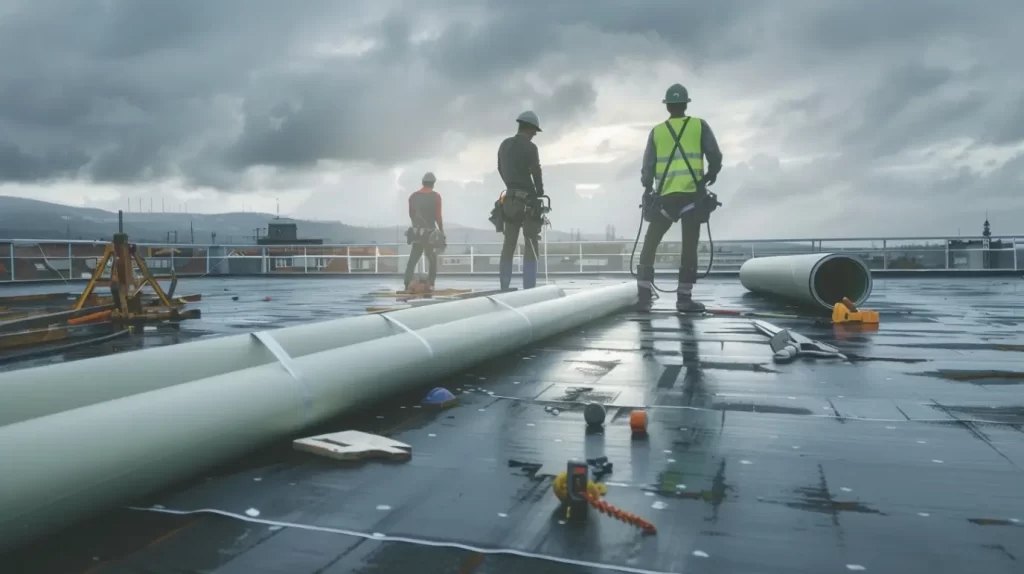
Special Considerations for Storm, Hail, and Weather-Induced Damage
Assessing storm and weather damage in areas like Anaheim, CA requires careful attention to detail. Property managers should regularly inspect roofs after storms for signs of wear, such as granule loss and cracks. Documenting damage is crucial for insurance claims to determine repair needs. Drone inspections and aerial imagery offer a comprehensive view, ensuring no hidden damage is missed. Hiring professional roofing contractors ensures roof integrity, enabling quick repairs that minimize safety risks and prevent costly long-term issues.
Assessing Widespread Wind and Hail Impact
Assessing wind and hail impacts on multi-building roofs requires a meticulous approach. Strong winds can cause structural issues, while hailstorms may lead to granule loss and increased moisture vulnerability. Using premium materials and drone technology for aerial imagery allows property owners to obtain precise damage measurements for timely repairs. Professional inspections after severe weather help prevent small issues from escalating into costly repairs, preserving the roof’s lifespan and efficiency.
Documentation and Evidence Gathering for Insurance Claims
Thorough documentation is crucial for roofing damage insurance claims. By scheduling a free inspection, property owners should compile high-quality photos of the damage, detailed notes on the roof’s condition, and records of relevant weather events. Professional inspections can provide expert assessments that strengthen claims.
Organizing this information facilitates communication with insurance companies, addresses potential issues, and supports accurate estimates, preventing costly disputes. This meticulous approach offers peace of mind during the claims process.
Your Next Steps
Addressing roofing projects and damage in multi-structure complexes is crucial for maintaining integrity and resident safety. Property owners and facility managers should prioritize regular inspections and adopt advanced techniques like drone technology and thermal imaging to identify issues early. Companies such as Fontaine Roofing in Anaheim, CA, offer timely, professional interventions that lower repair costs and extend roof lifespan, ensuring peace of mind for stakeholders. By following best practices and staying updated on roofing trends, owners can protect their investments from unnecessary expenses.
Read our blog: Best Practices for Coordinating Roofing Work With Tenants
Frequently Asked Questions
How often should roofing inspections be conducted in multi-structure complexes?
Regular roofing inspections in multi-structure complexes should be conducted at least twice a year, ideally in spring and fall. Following severe weather events, immediate inspections are also recommended to address potential damage swiftly, ensuring safety and preventing costly repairs down the long run.
What technologies provide the most accurate damage detection for large properties?
Advanced technologies like drone inspections and aerial surveys offer precise imaging and data collection for large properties. Remote sensing, satellite imagery, and infrared scanning further enhance damage detection accuracy by identifying moisture intrusions and structural anomalies that may not be visible to the naked eye.
Can minor roof damage in one building affect neighboring structures in a complex?
Yes, minor roof damage in one building can impact neighboring structures, especially in interconnected complexes. Issues like water infiltration or structural weakness can spread, affecting the overall integrity and safety of surrounding buildings. Regular inspections are essential to mitigate these risks.

